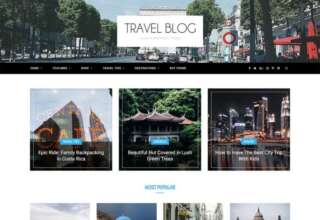Although many restrictions are still in place, travel is slowly starting up again. People locked down for months want to stretch their legs, see something other than a screen, and boost the economy. Restaurants and some tourist attractions (Florida’s Universal Orlando Resort, The Museum of Fine Arts, Houston) are opening for local and domestic travel. A few countries (Greece, Italy) are starting to welcome international travelers.
But how can you safely explore a world of potentially deadly encounters with friendly people who might infect you (or who you might expose to the virus)? Is the airplane really a soaring petri dish? Is visiting a national park possible while social distancing? And if you choose a seemingly safer road trip, can you stop to use a public restroom?
A poll by National Geographic and Morning Consult finds that just 2 percent of 2,200 Americans said they’d jump on a plane now, and only another 8 percent would consider it later this summer. That’s wise with travel advisories still in place, including the U.S. Centers for Disease Control and Prevention (CDC) warnings against international travel and cautions about travel within the U.S., and with many countries and states (Maine, Hawaii) still requiring 14 days of post-travel self-isolation regardless of symptoms.
As we recently report, travel planning is good for your mental health. Knowing more about real and perceived COVID-19 risks might help you feel better about getting out as roadblocks lift. Here are best practices for travelers.
Challenge: Being crammed next to strangers in a flying metal tube
Best practice: It’s reassuring to know that “data to date suggest only rare possible occurrences of in-flight transmission” of COVID-19, says Dr. Lin H. Chen, associate professor at Harvard Medical School and director of Cambridge’s Travel Medicine Center at Mount Auburn. She explains that if everyone follows the World Health Organization’s guidelines, the risk of transmission aboard planes, and anywhere else, is significantly reduced.
A plastic drape covers an airline check-in counter at Amsterdam’s Schiphol Airport on March 27, 2020. Barriers like this between workers and travelers are meant to help prevent the spread of COVID-19.
Photograph by REMKO DE WAAL, AFP/Getty Images
“Many people think they get sick on an airplane, but the reality is that the air quality on an airplane is actually really good—high amounts of clean outdoor air and all recirculated air passes through a HEPA filter,” says Joe Allen. An assistant professor and director of the Healthy Buildings Program at Harvard T.H. Chan School of Public Health, Allen explains that you’re more likely to pick up a bug standing in line at airport security, at the boarding gate, or on the subway.
Airports and airlines are trying to minimize the risks of contagions in their often-crowded environments. Intensive cleaning is now the norm; planes are now being fogged with electrostatic disinfectant that sticks to surfaces like seatbelts. Some airlines give you wipes and the Transportation Security Administration has upped the size of hand sanitizer bottles you can bring on board from 3.4 ounces to 12.
Face coverings are required to board most flights. Airlines are trying to seat people so they have more space. But that doesn’t necessarily mean middle seats are remaining empty, especially with reductions in numbers of flights. There’s no national U.S. policy yet, but several airlines are checking for fevers. They won’t let you fly with a temperature above 100.4℉ (though testing is far from foolproof).
Internationally, some destinations require proof of a negative COVID-19 test; other destinations test passengers on arrival. Many have mandatory 14-day quarantines, sometimes requiring you to submit a quarantine plan for approval, download an app, or get a tracking bracelet to ensure you follow the rules. Vaccination certification may eventually be needed for travel, but so far the science doesn’t support “immunity passports” or proof that a person has had COVID-19 and is, in theory, immune.
Should I head to a national park?
Challenge: Avoiding big crowds in the great outdoors
Best practice: “There are many health benefits to being outside in nature, and the risks are low and manageable,” says Allen. The key is keeping a six-foot distance. A good practice at a park is to pretend that other people are grizzly bears and stay away from them.
Check the National Park Service’s find-a-park website to see if the park is closed or partially closed (restrooms and food services, in particular), for limits on numbers of visitors, and other rules like mask-wearing. Avoid group activities that involve close contact and practice social distancing at camp sites. Joyce Sanchez, an infectious disease specialist and medical director of the Travel Health Clinic at Froedtert and the Medical College of Wisconsin, reminds us that “summer is tick and mosquito season,” so don’t forget your bug spray and sunscreen (though perhaps a face-mask tan will become a badge of honor that you’re doing your part to protect others)
Should I rent a cottage by the sea?
Challenge: Assessing the safety of beaches and vacation rentals
Best practice: Like park trips, seaside vacations are great if you can stay away from others and obey beach closure rules. There’s no evidence you can catch COVID-19 from the water (it’s other people you should be concerned about). Remember to bring your two best beach friends: reef-safe sunscreen free of oxybenzone and hand sanitizer.
A woman sunbathes in a roped-off social-distancing zone on the beach in La Grande Motte in southern France.
Photograph by CLEMENT MAHOUDEA, AFP/Getty Images
Regarding rentals, ask whether properties are cleaned according to public health guidelines, such as the WHO’s accommodation sector advice. Airbnb’s Enhanced Cleaning Initiative includes a 24- to 72-hour vacancy period between guests (though cleaners may visit during that window), but it’s likely unnecessary given evidence that the coronavirus floats in the air only up to three hours. Since it’s possible for the virus to live on surfaces for two or three days, you could give high-touch surfaces an extra clean. As Chen says, “good hand washing should overcome potentially contaminated touching.” If anxiety outweighs the benefits of a vacation, it’s a sign you’re not ready to venture out yet.
Should I stay in a hotel?
Challenge: Distancing safely and trusting housekeeping
Best practice: Hotels that take better care of their employees (by providing them with personal protective equipment and paid sick leave) are more likely to take better care of you. Check the website of any hotel you’re considering to determine how they’re responding to COVID-19. Many U.S. hotels are following the American Hotel and Lodging Association’s new Safe Stay guidelines.
Choose properties that base their protocols on science, rather than things that sound good but have little effect or take focus away from areas that really matter. Look for hotels that have installed plexiglass at reception and that require staff to wear masks, or where you can check-in online and use your phone as your room key.
In Pristina, Serbia, a worker in a protective suit sprays disinfectant in a hotel room to prevent the spread of coronavirus.
Photograph by ARMEND NIMANI, AFP/Getty Images
Avoid elevators and, if able, “take the opportunity to exercise and use the stairs,” advises Sanchez. Room service may be safer than the restaurant. Go for a swim if the pool isn’t crowded: Standard pool cleaning kills viruses, so the pool is probably safe; it’s the people you need to worry about. While clean rooms are important, what’s more important is staying six feet away from others. And, of course, wash your hands when you arrive in your room and again before you leave.
Should I use a public restroom?
Challenge: Taking care of business in busy bathrooms
Best practice: Assume public restrooms “are not properly disinfected and treat surfaces as if they have live virus on them,” says Sanchez. That said, it’s often necessary to use. When you do, choose single-stall and well-ventilated bathrooms if you can, and keep your distance from others.
Chen says that “good hand hygiene is key after using a public bathroom,” meaning wash and dry your hands; if there’s no soap, use hand sanitizer. She adds “I am unaware of any data to show that flushing aerosolizes SARS-CoV-2 and transmits the virus.” Regardless, it’s always good practice to put the lid down before you flush.
What about people who don’t wear masks?
Challenge: Staying safe while respecting others’ boundaries
Best practice: Following all the new COVID-19 protocols takes some getting used to. It’s easy to revert to pre-pandemic habits in new situations, when we’re stressed, and when we’re trying to relax and have fun. Being as kind and understanding as possible helps minimize stress.
Setting a good example is the best way to encourage others. Jonathon Day, associate professor and graduate program director at Purdue’s School of Hospitality and Tourism Management, says “safety when traveling (and when out and about in general) is a ‘co-creation.’”
“If it’s someone you know who is non-mask-wearing [or] non-social-distancing, it might be worth discussing the reasoning behind these measures,” says Chen. Remember that not everyone can wear a mask and that we’re all human and can forget the new norms. You could politely ask anyone who gets too close “would you mind giving us a bit more space, please?” but it might be easier just to move away from them. It’s likely not worth the risk, or the stress, to confront a stranger. If you can’t escape the situation, ask a store manager or flight attendant for help.
Remember that, with communicable diseases, “if everyone is responsible to themselves and community/society, then we would all be safer,” says Chen.
Know the safety basics
We’re still learning about COVID-19. But one consensus is that it seems to spread most easily by close contact between people. The CDC says that touching objects isn’t the main way of contracting it.
This means that whenever you’re away from home, the most important thing you can do is maintain a six-foot (or more) distance from people you don’t live with. Wearing a face covering also minimizes the chance you’ll pass a virus or other illness to others.
Other key prevention measures, outlined by the World Health Organization and other public health authorities: washing your hands well, avoiding touching your face, coughing and sneezing into your elbow, disinfecting frequently touched items like your phone, and staying home if you’re sick. Practicing these measures keeps you—and everyone else—safer, regardless of how far you roam. “COVID-19 has shown that we have shared responsibilities to reduce spread,” says Chen, who’s president of the International Society of Travel Medicine.
General considerations for travel
During a pandemic, going to the grocery store—let alone traveling to another city or country—requires new protocols. Follow policies about lockdown restrictions and mandatory quarantines, both at home and at your planned destination. The CDC provides links to the rules of each state’s and territory’s health departments. Many international borders remain closed to nonessential travel, and some countries also limit domestic travel between regions.
Examine your personal situation. Extra cautions are needed for anyone at elevated risk of contracting COVID-19. Check post-travel quarantine rules, including your employer’s. Just as important as protecting you and your loved ones is shielding other people. You don’t want to bring the virus from your community, especially to places with low case numbers, or bring it home (the CDC tracks cases and deaths by state and county). Consider whether the benefits of travel outweigh the risk that you might spread the virus.
When deciding where to go and how you’ll get there, scrutinize how easy it will be to stay away from other people. “Generally speaking, driving is going to be safer than flying commercially from an infection standpoint because you can control how you reach your destination—who is sharing the car with you, what measures are used for disinfecting surfaces, where you stop along the way, and when you return,” says Sanchez.
source: nationalgeographic
















